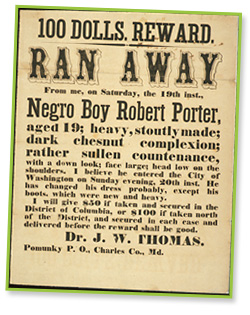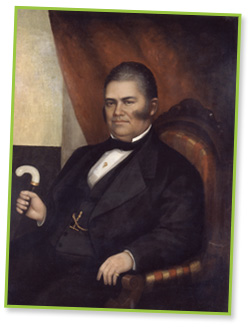Halfway to Freedom
High School: Grades 9–12
Background Information
Underground Railroad
This secret system of cooperation among antislavery activists in the United States helped fugitive slaves reach freedom in the North and in Canada. Chicago was a center of antislavery activity and was the end point for many of the Underground Railroad routes that began in Illinois towns bordering the Mississippi and Ohio rivers. Chicago activists helped fugitives by providing lodging and transportation.
Chicago was a relatively safe place to live, even though the Illinois Black Laws meant that African Americans did not have full citizenship. Former slaves who settled in Chicago received pay for their work and even opened businesses. The Fugitive Slave Act of 1850 brought new dangers, even for black people who had certificates of freedom. Many black Chicagoans moved to Canada for greater safety.
John and Mary Jones and the Illinois Black Laws
John and Mary Jones came to Illinois in 1844 and discovered a system of laws, called the Illinois Black Laws, which restricted the freedoms of African Americans. Under these laws, blacks could not vote or hold political office. They could not testify against a white person in court and were required to post a $1,000 bond to receive official certificates of freedom. The Joneses dedicated themselves to the fight against slavery and the Illinois Black Laws.
John Jones became a wealthy tailor in Chicago. The couple counted many prominent activists as associates including Frederick Douglass and John Brown. According to a letter written by their granddaughter Theodora Purnell in 1955, their home served as a stop on the Underground Railroad. Later in life, John Jones was elected Cook County commissioner and fought segregation in public schools.
Source: The Electronic Encyclopedia of Chicago
Downloads (pdf)


